Wondering how to disable access to the Command Prompt for a standard account?
Command Prompt is a powerful program that allows users to perform advanced administrative functions by executing relevant commands. If you have been the victim of frequent Windows errors, you might have come across this tool as it is often used to restore the system’s health in case of errors.
However, since the Command Prompt is a powerful tool, its incorrect usage can cause severe system issues. If your PC is used by other individuals, disabling their access to Command Prompt is an excellent way to ensure safety, especially if your kids use it.
This guide will walk you through the process of disabling standard account user’s access to the Command Prompt.
Let’s dive right in!
1. Use the Local Group Policy Editor.
Group Policy Editor is a centralized place for users to manage the operating system. Administrators also use it to make changes in Windows, including the critical ones that are not allowed by programs such as Control Panel.
If you want to disable access to the Command Prompt for standard accounts, then one of the simplest ways to do it is via Group Policy Editor.
Here is what you need to do:
- Open a Run dialogue box by pressing the Windows + R keys simultaneously.
- Type ‘gpedit.msc’ in the text box and hit Enter to launch the Group Policy Editor.
- Now navigate to the path mentioned below in the Group Policy Editor.
User Configuration\ Administrative Templates\ System\
- Now locate Prevent access to the command prompt and double-click on it.
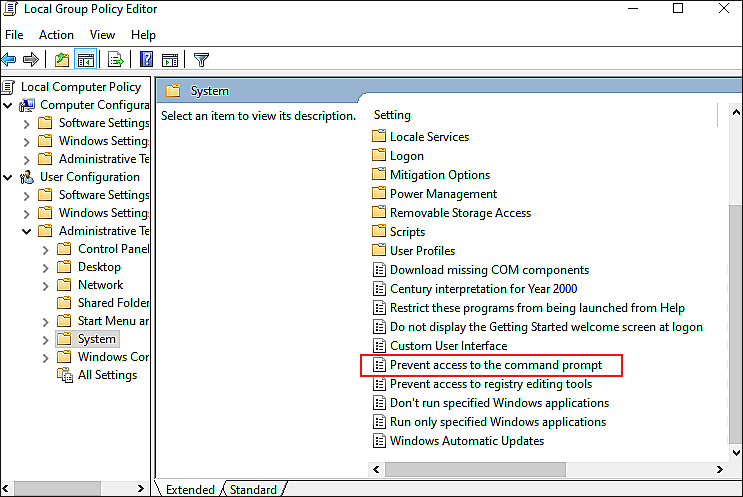
- Inside the new window, click Enable, and under Option, select Yes from the drop-down menu.
- Finally, click on the Apply/OK button to save the changes.
Doing so will prevent standard users from accessing Command Prompt on your PC.
2. Use Windows Registry.
Like the Group Policy Editor, Windows Registry also allows the users to manage and configure settings of programs on your PC. It stores critical information about each program, and by making slight changes in those settings, you can make Windows work according to your own preferences.
However, we strictly advise you to follow this method carefully as Registry is a powerful tool. Incorrect usage can wreak havoc on your system.
Here is what you need to do:
- Launch a Run dialogue box by pressing Windows + R keys simultaneously.
- Type ‘regedit’ in the text field of the dialogue box and hit Enter.
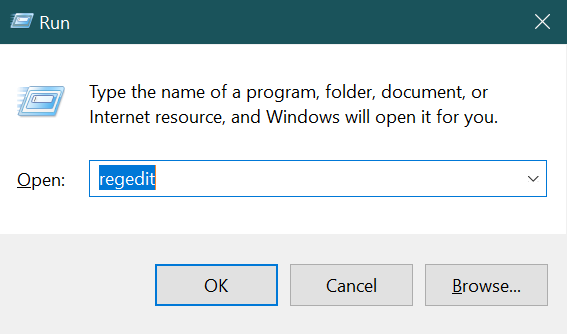
- This will launch Windows Registry. Now navigate to the location mentioned below.
HKEY_CURRENT_USER\Software\Policies\Microsoft\Windows\System
- Inside the System window, right-click anywhere and click on New.
- Select DWORD (32-bit) Value option and name it as DisableCMD.
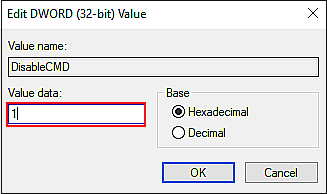
- Now double-click on the newly created value, and in the text field under the Value Data option, type 1.
- Finally, click on OK to save the changes and restart your PC.
That’s it. The standard account users would not be able to reaccess Command Prompt. If you want to enable their access to Command Prompt in the future, follow the steps mentioned above again and replace the Value Data with 0.
3. Using ICacls.exe Command-line Utility.
You can also use Command Prompt itself to disable the access of standard account users. However, this method is only suitable for the administrators who want to prevent only one standard account user from accessing Command Prompt.
Here is what you need to do:
- Type cmd in the search bar and click on Run as administrator.
- Type the following command inside the Command Prompt window and hit Enter. Don’t forget to replace ‘Zainab’ with the username associated with the targeted standard account.
takeown /f cmd.exe
icacls cmd.exe /deny Zainab:RX
- Close the Command Prompt and check if the issue is resolved.
Hopefully, doing so will block the targeted standard account from accessing Command Prompt on your PC.
4. Try Using CleanMyPC.
There are times when we fail to perform desired actions on our PC and face frequent errors while using certain programs. This typically happens due to the junk, unwanted system files that are not just occupying the space but are also affecting your PC’s performance significantly.
If this is something you have been facing too, then it’s the right time to deep clean your PC using an efficient PC cleaner. If you are looking for a reliable PC cleaner, we highly recommend CleanMyPC.

CleanMyPC is not just a PC cleaner because it comes with a wide range of system maintenance tools that can take care of everything from cleaning Windows Registry to protecting your Online privacy.
Install CleanMyPC now to boost your PC’s overall performance!
5. Use the Advanced Permission Dialogue.
Another easy way to prevent standard account users from accessing Command Prompt is by using the Advance Permission Dialogue. Advance Permission Dialogue allows users to edit or remove permissions of files, folders, and programs like the Command Prompt.
Here is how you can use the Advanced Permissions Dialogue to edit the permissions of Command Prompt:
- Go to the Local Disk (C:).
- Locate the Windows folder and open it.
- Now find the System32 folder and double-click on it.
- Next, look for cmd.exe and right-click on it.
- Choose Properties and go to the Security tab.
- Click on the Advanced button to open the Advanced Security Settings dialogue.
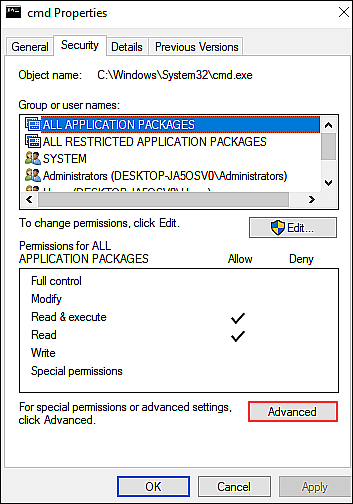
- Select Change against the Owner option and under ‘Enter the object name to select’, type Administrators.
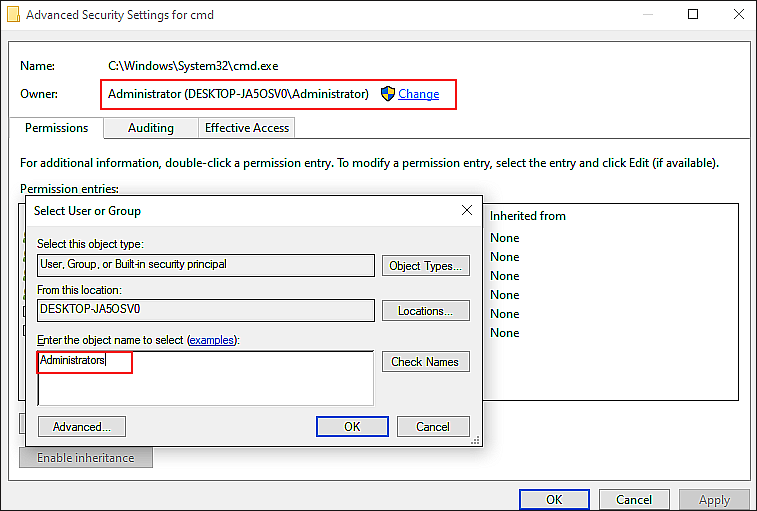
- Hit Enter to save the Changes.
- Now inside the Advanced Security Settings dialogue, click on Change permissions.
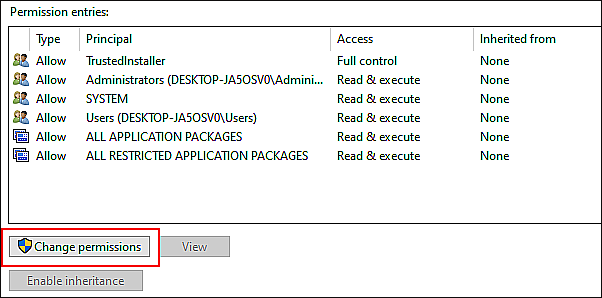
- Select Add and click on Select a principal.
- Now type the username of the targeted account and click OK.
- Click on the drop-down menu against Type and select Deny.
- Checkmark the Read, Read & Execute boxes and click OK.
This would change the permissions of the targeted account, and hopefully, the target account user will not be able to reaccess Command Prompt.
This wraps up our guide on disabling access to the Command Prompt for the standard account. We tried to walk you through the steps in detail and hope that our troubleshooting steps helped resolve the issue. If you have questions regarding the troubleshooting methods, please let us know in the comment section below.
If this guide helped you, please share it. 🙂





